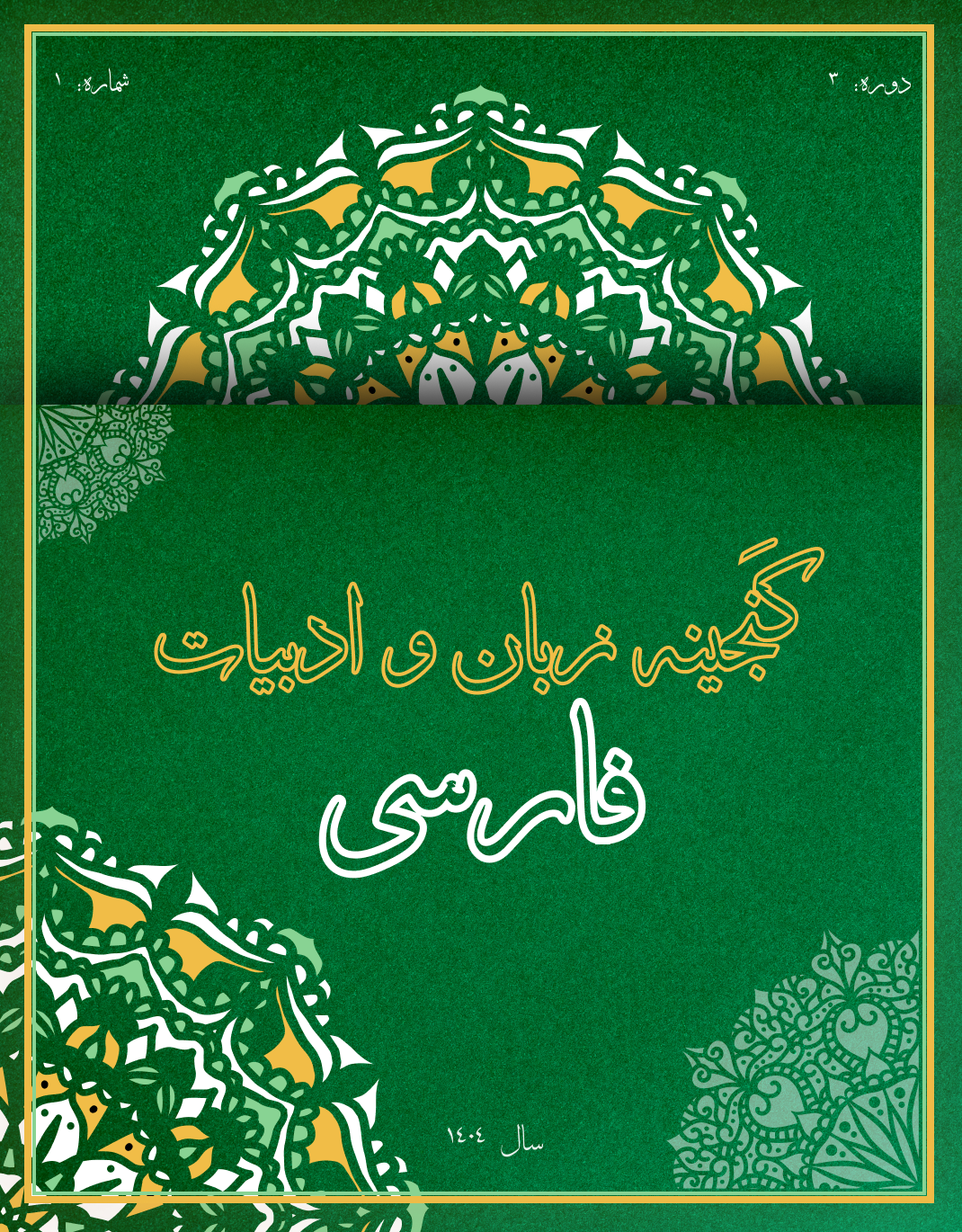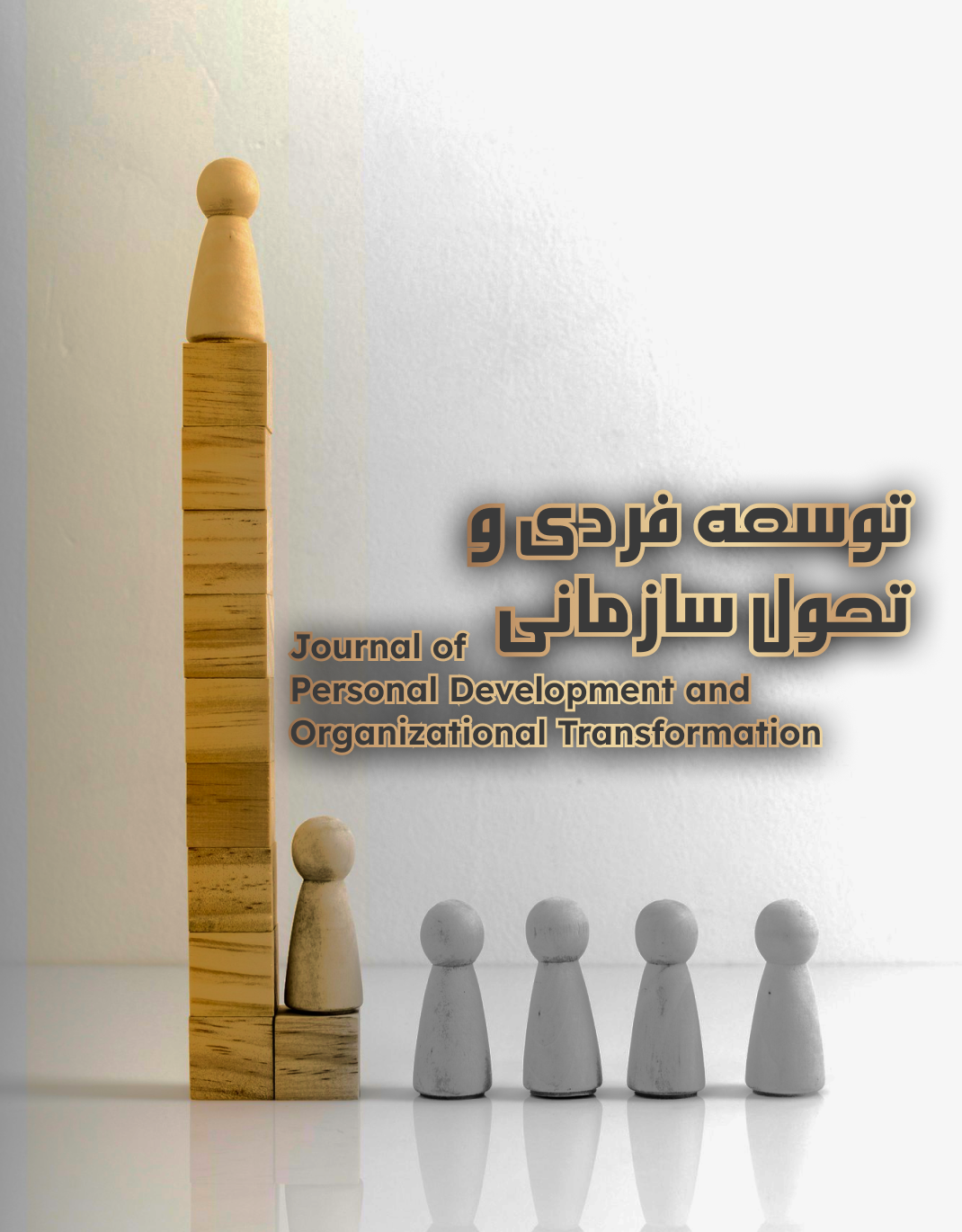بازکاوی ماهیت رهبری آموزشی در پارادایم پیچیدگی با توجه به عناصر اصلی هنرستانهای فنی و حرفهای از دیدگاه سند تحول بنیادین آموزش و پرورش و زیرنظامهای آن
کلمات کلیدی:
ماهیت رهبری , تحول بنیادین , هنرستان های فنی و حرفه ای , آموزش و پرورشچکیده
با توجه به اهمیت تئوری پیچیدگی و بکارگیری اهداف آن در نظام آموزشی، هدف اصلی این مطالعه و صورت بندی عناصر اصلی هنرستانهای فنی و حرفهای از دیدگاه سند تحول بنیادین آموزش و پرورش و زیر نظامهای آن با توجه به مولفههای پارادایم پیچیدگی میباشد. جهت نیل به اهداف مطالعه از مصاحبه با خبرگان و روش دلفی در بخش کیفی و از رویکرد تحلیل سلسله مراتبی (AHP) در بخش کمی استفاده شده است. جامعه آماری این مطالعه کلیه خبرگان حوزه آموزش فنی و حرفهای است که با استفاده روش گلوله برفی، 14 نفر جهت مصاحبه انتخاب گردیدند. پس از مراجعه به خبرگان و پالایش نظرات مشخص شد که چارچوب رهبری آموزشی در پارادایم پیچیدگی در هنرستانهای فنی و حرفهای شامل 7 مولفه و 41 زیرمولفه میباشد. مولفههای اصلی عبارتند از: معلم، محتوا، محیط یادگیری، یاددهی- یادگیری، محیط کلان، مدیریت و ارزشیابی. بر اساس نتایج به دست آمده در رویکرد AHP مشخص شد که معلم با امتیاز242/0 مهمترین مولفه برنامه درسی بر اساس تئوری پیچیدگی میباشد. پس از معلم، مولفههای محیط کلان (225/0)، محتوا (149/0) ،یاددهی- یادگیری (125/0)، محیط یادگیری (116/0)، مدیریت (092/0) و ارزشیابی (051/0) در اولویتهای بعدی قرار دارند. همچنین مقایسه سند تحول بنیادین و مدل استخراج شده تحقیق نشان داد که اهداف ارائه شده در سند تحول بنیادین اگرچه به طور کامل با مولفهها و تعاریف تئوری پیچیدگی مطابق نداشته، ولی در بسیاری از ابعاد مطابقت بالایی را نشان میدهد. در نهایت نیز بر اساس یافتههای تحقیق، پیشنهاداتی ارائه گردید.
دانلودها
مراجع
Ahanchian, M. R., & Mohammadi, C. (2013). Lessons from Chaos Theory in Iran's Science Education Curriculum System. Curriculum Studies Quarterly(29), 5-26. https://elmnet.ir/doc/845536-29852
Alvani, S. M. (2009). Public Management. Ney Publishing.
Bertuglia, C. S., & Vaio, F. (2005). Nonlinearity, Chaos and Complexity: The Dynamics of Natural and Social Systems. Oxford University Press. https://doi.org/10.1093/oso/9780198567905.001.0001
Byrne, D. (1999). Complexity Theory and the Social Sciences. London and New York. https://www.taylorfrancis.com/books/mono/10.4324/9780203003916/complexity-theory-social-sciences-david-byrne
Cilliers, P. (1998). Complexity and Postmodernism: Understanding Complex Systems. Routledge. https://books.google.nl/books/about/Complexity_and_Postmodernism.html?id=HnEx6FaO0MQC&redir_esc=y
Dalmedico, D. A. (2004). Chaos, Disorder, and Mixing: A New Fin-de-Siècle Image of Science? Growing Explanations: Historical Perspectives on Recent Science. Duke University Press. https://doi.org/10.2307/j.ctv11hpm7f.5
Danaee Fard, H. (2006). An Inquiry into the Philosophical Foundations of Complexity Theory: Does Complexity Science Have a Postmodernist Nature? Human Sciences Modares, Special Issue on Management, 171-210. https://www.magiran.com/paper/410177/a-study-about-philosophical-foundations-of-complexity-theory-is-complexity-science-a-postmodern-theory?lang=en
Deborah, P. B. (2005). Complexity, Chaos, and Nonlinear Dynamics: A New Perspective on Career Development Theory. The Career Development Quarterly, 53, 194-207. https://doi.org/10.1002/j.2161-0045.2005.tb00990.x
Frei, R. (2011). A Complex Systems Approach to Education in Switzerland. https://pdfs.semanticscholar.org/bb52/8c548d20c0a103c8d96fc999cd2570cdb782.pdf
Gros, C. (2010). Complex and Adaptive Dynamical Systems. Springer. https://doi.org/10.1007/978-3-642-04706-0
Morrison, K. (2003). Complexity Theory and Curriculum Reforms in Hong Kong. Pedagogy, Culture and Society, 11(2), 279-302. https://doi.org/10.1080/14681360300200174
Parliament Research Center of the Islamic Republic of Iran. (2022). Pathology of Technical and Vocational Education in the Second Cycle of Secondary Education (Technical and Vocational Schools and Skill-Training Schools) and Proposed Corrective Strategies. https://report.mrc.ir/article_9316.html
Ravi, V., Pradeepkumar, D., & Deb, K. (2017). Financial time series prediction using hybrids of chaos theory, multi-layer perceptron and multi-objective evolutionary algorithms. Swarm and Evolutionary Computation, 36, 136-149. https://doi.org/10.1016/j.swevo.2017.05.003
Sharifzadeh, F., & Nagavi Hosseini, S. A. (2020). Exploring the Evolution of Public Policy Schools: From Traditional Schools to the Chaos Theory School. Politics Quarterly, Journal of the Faculty of Law and Political Science, 50(3).
Supreme Council of Education. (2012). National Curriculum of the Islamic Republic of Iran.
Wood, P., & Butt, G. (2014). Exploring the Use of Complexity Theory and Action Research as Frameworks for Curriculum Change. Journal of Curriculum Studies, 46(5). https://doi.org/10.1080/00220272.2014.921840
دانلود
چاپ شده
ارسال
بازنگری
پذیرش
شماره
نوع مقاله
مجوز
حق نشر 2025 Amin Ollah Omidvandchali (Author); Samira Pali; Seyedeh Khadijeh Moafimadani (Author)

این پروژه تحت مجوز بین المللی Creative Commons Attribution-NonCommercial 4.0 می باشد.







